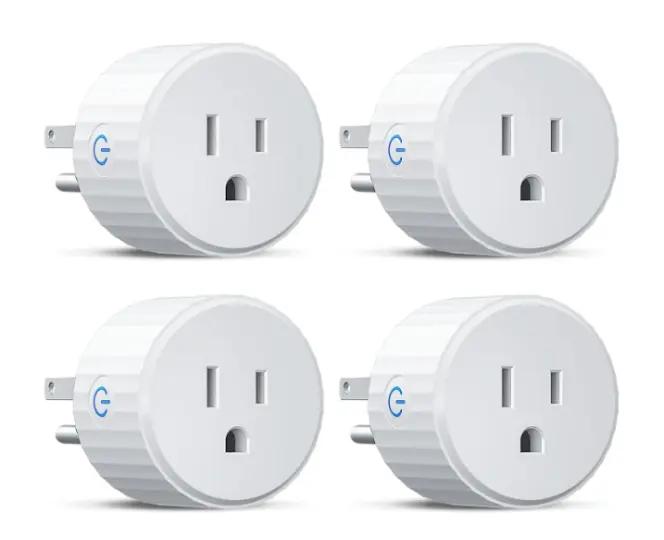
United States Electrical Plug Certification
North American standard plugs are manufactuRED according to the ANSI/NEMA WD6 standard. Common types include 1-15, 5-15, 5-20, 6-15, and 6-20.
North American plugs and sockets typically comply with NEMA (National Electrical Manufacturers Association) standards and are managed under NEMA guidelines.

Complete Guide to Common Plug and Socket Certification Standards and Testing Items in North America
Common Types of Electrical Plugs and Sockets in North America
01. Wall Outlets
02. Adapter Sockets
03. Power Strips
04. Furniture Power Distribution Sockets
05. Other Types of Sockets
Overview of Common Plug and Socket Applications
Plug and Socket Type A (1-15)
- Applicable Regions: North America, Central America, Japan, Vietnam
- Electrical Ratings: 15A / 125VAC
- Features:
Type A plugs (also known as flat blade plugs) are ungrounded plugs with two flat parallel pins.
Plug and Socket Type B (5-15)
- Applicable Regions: North America, Central America, Japan, Vietnam, Mexico, South Korea, Taiwan, Central America, Colombia, Venezuela, Ecuador, and parts of the western coast of South America.
- Electrical Ratings: 15A / 125VAC
- Features:
Type B plugs feature two flat parallel blades and a round grounding pin. The grounding pin is longer than the others, ensuring the device is grounded before electrical connection.
In developing countries, power systems often lack grounding. It is not recommended to cut off the grounding pin, as this poses safety hazards. Grounding remedies can be provided. Like Type A plugs, U.S. and Japanese versions differ slightly.
Other Types of Plugs and Sockets (5-20, 6-15, 6-20)
- Suitable for different appliances and industrial uses.
- These special-purpose plugs are typically used for devices requiring higher voltage or current, such as air conditioners, power tools, and industrial equipment.
Common Testing Standards for North American Plugs and Sockets
- UL 498 Ed.16
- UL 498A Ed.2
- UL 498B Ed.4
- UL 498C Ed.1
- UL 817 Ed.12
- UL 962A Ed.5
- UL 1363 Ed.5
- UL 1449 Ed.4
- UL 1472 Ed.2
- UL 60730-1
- UL 60730-2-7 Ed.3
- UL 1977
- UL 1977 Ed.2
- UL 1977 Ed.3
Common Testing Items for North American Plugs and Sockets
01. Enclosure Inspection
02. Mechanical Assembly
03. Accessibility of Conductive Parts
04. Temporary Installation Methods
05. Corrosion Resistance
06. Insulating Materials
07. Power Cords
08. Strain Relief
09. Socket Components
10. Auxiliary Protection
11. Switches
12. Conductive Components
13. Internal Wiring
14. Spacing
15. Printed Circuit Boards
16. Circuit Isolation
17. Grounding
18. Storage Area
19. Temperature Test
20. Dielectric Withstand Test
21. Leakage Current Test
22. Ground Continuity Test
23. Fault Current Test
24. Overcurrent Test
25. Installation Hole Barrier Test
26. Stress Relief Test
27. Impact Test
28. Crush Test
29. Installation Sufficiency Test
30. Molding Stress Deformation Test
31. Leakage Test
32. Water Leakage Test
33. Flexible Cord Label Durability Test
Important Considerations for North American Plug and Socket Testing
When designing and certifying products, pay special attention to the following:
01. Product Markings Must Include:
- Current, voltage, and power characteristics
- Trademark or manufacturer’s information and product model
- For converters and extension sockets, power rating labeling is required
02. Requirements for Environmental Adaptability and Durability:
- The product should function reliably under expected environmental conditions, including temperature and humidity.
- Durability tests over a certain period are necessary to ensure long-term reliability.
03. Requirements for Product Material and Construction:
- Materials must meet environmental protection and flame-retardant standards; construction must be robust to prevent accidental damage or malfunction.
- Polymer plastics should comply with UL 746C standards.
04. Special Requirements for Power Strips:
- U.S. plug polarity is opposite to China’s: ground at top, hot (live) on the left, and neutral on the right—this must be considered in design.
- Ground wires must be securely welded or bolted; quick-connect terminals or friction-only fixation methods are not acceptable.
- Keyhole slots or similar temporary mounting devices (if provided) must ensure that support screws or similar parts do not damage electrical insulation or reduce spacing of live parts.
- For sockets with four or more outlets, overcurrent protection devices must be added.
Email:hello@jjrlab.com
Write your message here and send it to us
 WEEE Registration for Waste Electrical &Electr
WEEE Registration for Waste Electrical &Electr
 MSDS Chemical Safety Testing
MSDS Chemical Safety Testing
 What Are the Differences Between UK REACH and EU R
What Are the Differences Between UK REACH and EU R
 E-Cigarette GB 41700 Compliance Testing
E-Cigarette GB 41700 Compliance Testing
 What Are the Testing Items of California Propositi
What Are the Testing Items of California Propositi
 E-Cigarette EU TPD Testing
E-Cigarette EU TPD Testing
 Testing Certification for E-cigarettes Exported to
Testing Certification for E-cigarettes Exported to
 What is Amazon US CPC Certification?
What is Amazon US CPC Certification?
Leave us a message
24-hour online customer service at any time to respond, so that you worry!




